The Maine Department of Transportation has put a statewide halt on the use of a protective road sealant following questions about its use on a stretch of Route 225 in Rome where several motor vehicle crashes happened in recent months.
State officials are now investigating the mixture used in the sealant and whether that created slick road conditions, a phenomenon that has been linked to car crashes elsewhere in the country.
“We’re trying to figure this out and thought it was prudent to tap the brakes” on using the sealant statewide, said Paul Merrill, spokesman for the department. “Out of an abundance of caution, it’s a statewide pause.”
Among those involved in the crashes was Tom Streznewski, who was traveling west along Route 225 in Rome when the back wheels of his truck lost traction. In a flash, he was crouched by the steering wheel, with the truck rolled onto its left side and a tree punched through the back window and into the driver’s headrest.
“The state policeman who responded said usually they don’t talk to the drivers in crashes like this because they’re dead,” said Streznewski, 58, a Belgrade resident.

Tom Streznewski walks Wednesday on Route 225 in Rome, where the pavement was ground to remove a sealant that he believes created a slick surface and caused him to slide off the road, destroying his truck. The vehicle crashed Sept. 14 in the ditch, pictured at the right. Morning Sentinel photo by Rich Abrahamson
Although Streznewski was “miraculously unhurt,” the situation left him reeling — and more than $30,000 in the hole for a new truck. It had been lightly raining on the afternoon of the crash, Sept. 14, which contributed to the conditions he likened to black ice. He was also traveling slightly above the speed limit, which is 45 mph.
But when a passerby told him that he was not the first to go off that road in that area, Streznewski wondered if there was more to the story. A pair of crashes occurred the evening of June 20 in the same stretch of road.
Merrill confirmed that parts of Route 225 had been treated in early June with fog sealant, which is typically a light application of a diluted asphalt that gets its name from its spray application that is sometimes known as “fogging.” It’s an inexpensive way of slowing the deterioration of pavement that is commonly used on certain spots or stretches of road. A full rebuild of one mile of road can cost millions of dollars; re-paving could go for $50,000; and using fog sealant is less than that, according to Merrill.
Since the sealant was applied on an area of Route 225 in Rome, there have been three incidents involving cars going off the road in that location, all of which occurred during wet conditions, according to crash reports from the Maine Department of Public Safety and the transportation department’s public crash query tool.
Streznewski’s crash was the most recent. State Trooper Patrick Pescitelli acknowledged the “freshly paved” road in that report and wrote that “while on scene I observed two vehicles struggle to maintain traction while negotiating the same curve.”
The area is between Route 225’s intersections with Wooster Hill Road and North Pond Road, which contains a hill and a nearly 90-degree curve.
It was difficult to see while the road was wet, but when Steznewski visited the site on a dry day, he described the surface of the pavement as glass-like.

A stretch of Route 225 in Rome where sealant was applied. It had been raining on Sept. 14, 2019, when Tom Streznewski’s truck lost traction and ended in a ditch. Tom Streznewski photo
“It actually shone in the sunlight,” Streznewski said. “This stuff was applied so heavily that there’s actual runoff to the shoulders. When you look, it’s so thick that you can’t see surface of the aggregate, the stones that give you traction. There’s no question that what was done was not done correctly.”
Steznewski said that the material, which spans an entire lane — or sometimes two — for chunks of 50 to over 100 feet, poses a serious hazard. There are patches along Route 225 from Route 27 in Rome to Route 8 in Smithfield.
“What’s terrifying is: how many other roads have they done this to in the state?” Streznewski said.
Merrill said that was a figure he could not provide.
“This job was probably just this one stretch of Route 225 in Rome,” Merrill said. “It’s not a terribly long stretch of road that was worked on. We put out jobs and they get bid on or done by our crew. It’s not apples to apples, like this crew also did XYZ (project).”
LIABILITY QUESTIONABLE
The Department of Transportation has since ground some of the sealant off the part of Route 225 where Steznewski crashed, but Merrill said the department has not yet determined whether the surface of the road contributed to Streznewski’s crash — or whether the state agency is liable for what happened.
Prior to the fog seal being applied on Route 225 in June, there were six crashes since 2015 in the area where Streznewski lost traction, according to crash reports and data from the transportation department’s public crash query tool.
Merrill said the fog seal was obtained from Down East Emulsions LLC and applied by SHOem Roadway Services LLC, under the direction of the department. He didn’t know how many roads in Maine are treated by the sealant, but said it’s not uncommon to address road imperfections.
Merrill said, “The first takeaway from looking into this is: maybe there should have been a little bit less used, so that’s why we’re taking a little off the top until we know exactly what the conditions were and whether anything we did should have been done differently.”
After consulting other employees of the agency, Merrill added that crews may have applied the fog seal too quickly or the mixture of the sealant may have been off for the conditions of the road.
“Older pavement gets more sealant per square yard because older pavement is more absorbent,” he wrote in a follow-up email. “This was newer pavement (on Route 225) because it had just been paved last year.”
That means the sealant applied on Route 225 may not have been absorbed enough, possibly creating slick surface conditions.
The transportation department had SHOem Roadway Services, based in South Berwick, apply the sealant because there were cracks and potholes in the pavement, which was laid by Pike Industries Inc. in 2018, according to Merrill.

Tom Streznewski, recovers broken glass Wednesday in the ditch that he slid into off Route 225 in Rome last month. Morning Sentinel photo by Rich Abrahamson
The Maine Tort Claims Act, which gives the government immunity from most claims seeking to recover damages, states that “a governmental entity is liable for its negligent acts or omissions arising out of and occurring during the performance of construction, street cleaning or repair operations on any highway, town way, sidewalk, parking area, causeway, bridge, airport runway or taxiway.”
It continues with: “A governmental entity is not liable for any defect, lack of repair or lack of sufficient railing in any highway, town way, sidewalk, parking area, causeway, bridge, airport runway or taxiway.”
Donald Zillman, the Edward S. Godfrey Professor of Law at University of Maine School of Law, said a case against the state would be “somewhat of a long-shot.”
“That provision (of the Maine Tort Claims Act) specifies when the act must occur, and if there is no cleaning, construction or repair work underway, you can’t recover for that,” Zillman said. “The other line specifies what constitutes repair operations. The short answer is: Yes, that’s the provision you’d try to use, but it’s not one the courts have been terribly generous about allowing an injured party to recover against the government.”
Zillman added that because Streznewski was speeding, it complicates things.
“That may be a major cause of the accident,” he noted.
It’s not unheard of for fog sealant to be blamed for creating slick road conditions that result in crashes elsewhere. In August, authorities in Pocatello, Idaho, blamed fog sealant applied by road maintenance on a busy city street in connection with a pair of wrecks, including one that sent a woman to the hospital with a serious head injury.
FINANCIAL MATTERS
While it is not impossible, according to the professor, it is unlikely that the state will change the law to allow the Department of Transportation to be held more accountable in situations like this.
“I would guess that the Legislature, even as somewhat Democrat-dominated, would be very reluctant to expansively open this up to anything you can say was part of the roadway,” Zillman said.
Maine is frugal, he added, and not prone to giving large sums of money to people looking to recover damages. Plus, there are many things that could go wrong with highway construction and roadwork, Zillman said.
“You’ve got a good claim to go against the government, and some fault on the injured party,” he said. “I don’t think the Legislature would say, ‘It’s outrageous. Let’s see if we can put a further exception in,’ and I think the Legislature is reasonably comfortable turning some of the language to the court, and allowing it to slowly build up precedent.”
Streznewski said he does not plan to take legal action against the state agency because he was advised that the associated fees would cost more than the amount he could get from a settlement. His insurance company, Patrons Oxford Insurance Co., “is poking around a little, but (hasn’t) taken any action against the state yet,” according to Eric Swanson, its vice president of claims. Swanson would not comment on whether the company planned to take the state to court eventually. He said he had never handled a claim before where road surface was a factor.
Merrill, who said the transportation department’s “main mission is safety,” said that the agency will take some measures to prevent similar incidents from happening in the future.

Tom Streznewski said that the State Trooper who responded to the accident he was involved in on Route 225 in Rome on Sept. 14, 2019, told him that when they see trucks looking like his, the drivers are usually dead. Streznewski said he was crouched by the steering wheel. The tree punched through the back window and into the driver’s headrest. Tom Streznewski photo
“We’re not going to make drastic changes to our operations based on one (case),” Merrill said. “We’re acting out of an abundance of caution by taking short-term steps to address the problem. If we find there is a long-term issue, we’ll do something about it.”
He later added in an email that the transportation department “won’t use (fog seal) again to fix defective pavement until we understand what happened and have a system in place to make sure it’s applied correctly.”
While Streznewski received a net $7,500 from Patrons Oxford for his totaled truck — a 2004 Chevrolet — the sum does not come close to covering the costs of the $38,000 replacement.
“I’ll get my $500 deductible back if (Patrons Oxford) succeeds (in a lawsuit),” he said. “But that’s still $30,000 that was not in (my) budget.”
Sreznewski said that while he remains frustrated by the whole situation and its financial repercussions, he is grateful to be alive.
“I like driving (Route 225) on my motorcycle because it’s twisty and scenic,” he said. “If I came across this (fog seal) on my bike, I’d be flat on my back no question about it. And if there was another car in the other lane, or a loaded lumber truck, it’d be a disaster. I was extremely lucky to walk away.”
Send questions/comments to the editors.

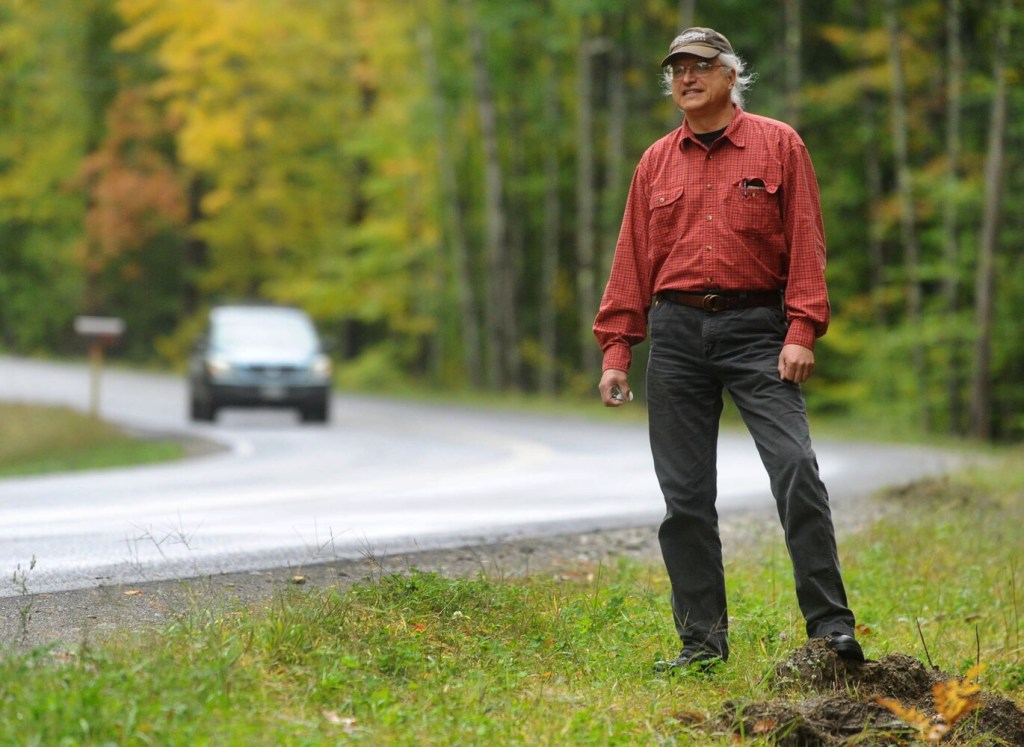
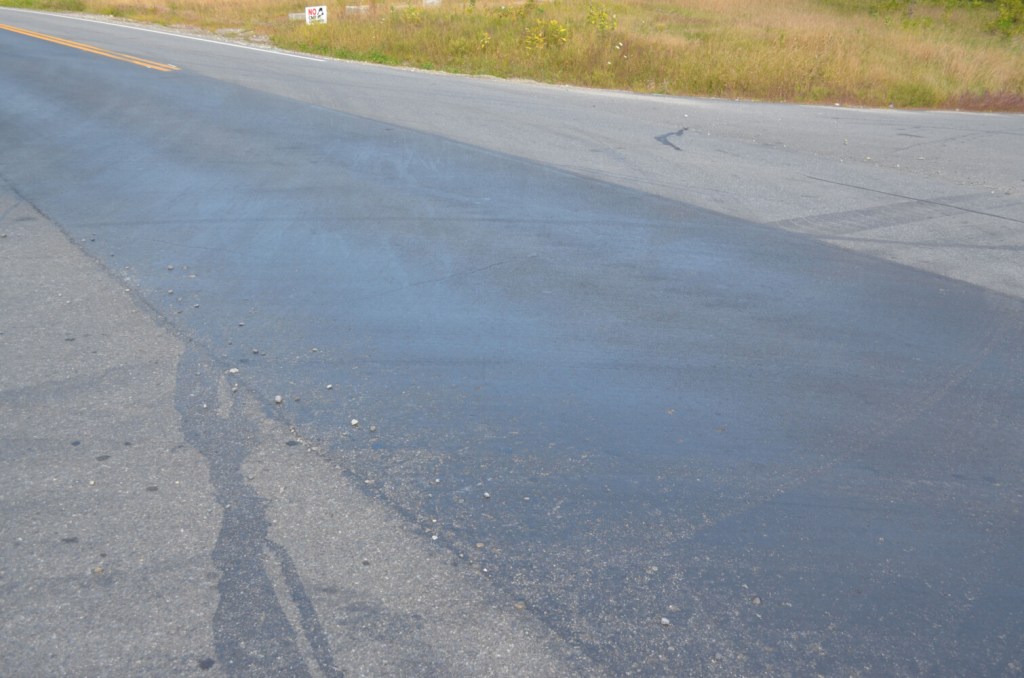
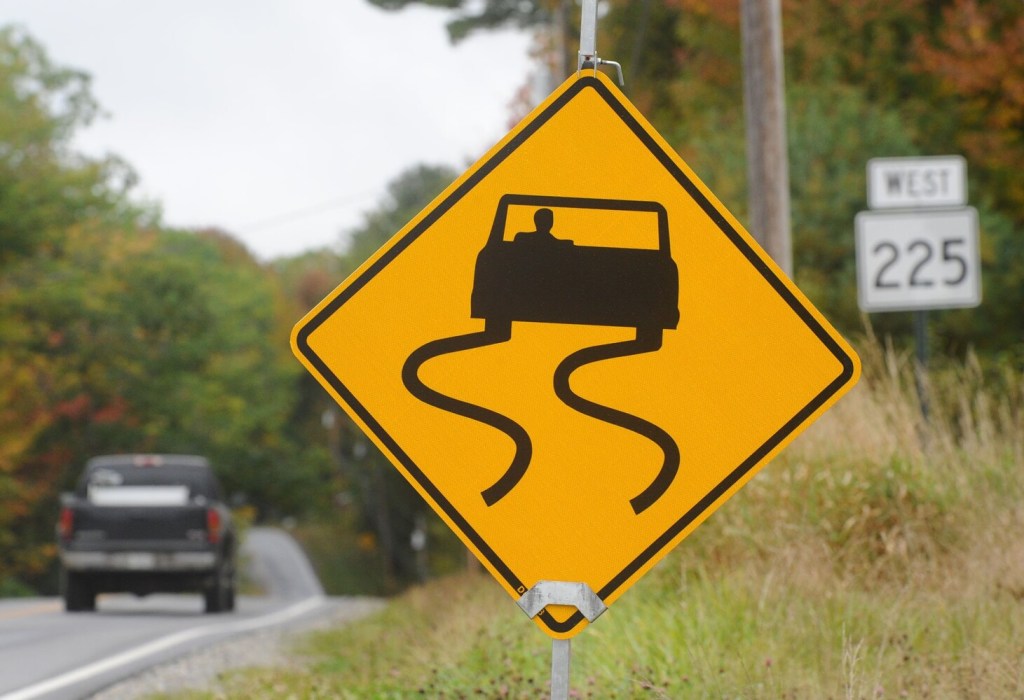
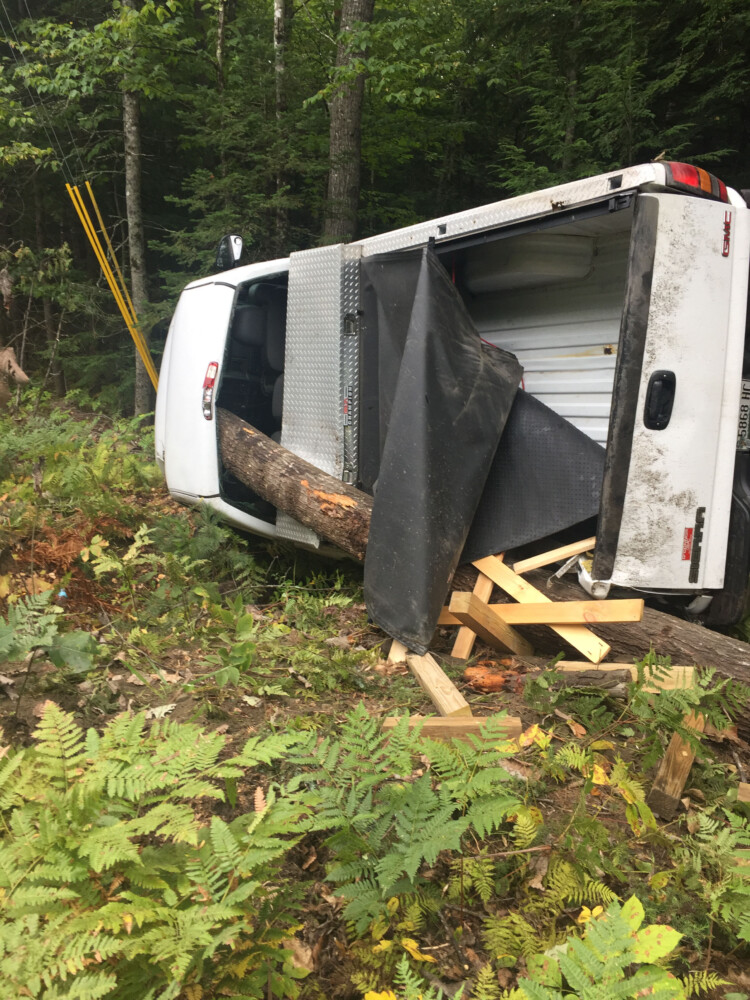
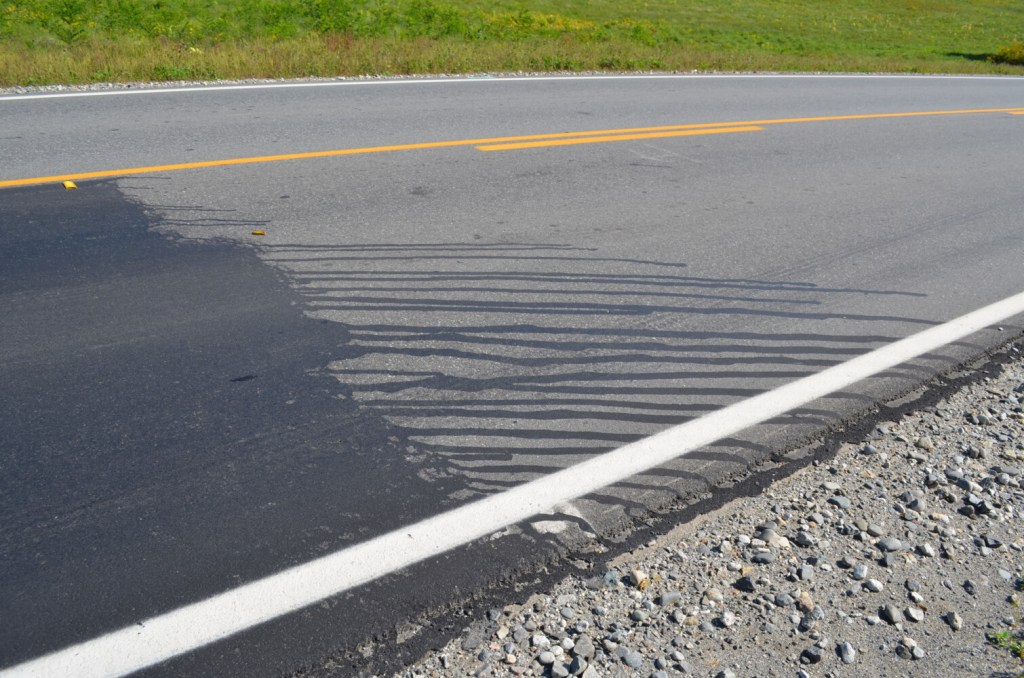
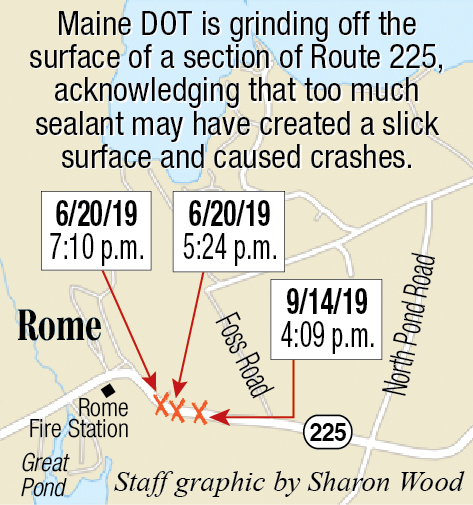

Success. Please wait for the page to reload. If the page does not reload within 5 seconds, please refresh the page.
Enter your email and password to access comments.
Hi, to comment on stories you must . This profile is in addition to your subscription and website login.
Already have a commenting profile? .
Invalid username/password.
Please check your email to confirm and complete your registration.
Only subscribers are eligible to post comments. Please subscribe or login first for digital access. Here’s why.
Use the form below to reset your password. When you've submitted your account email, we will send an email with a reset code.